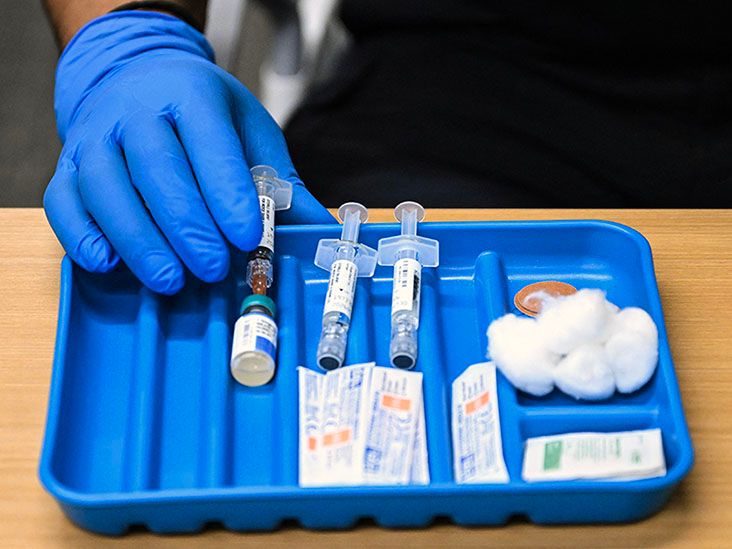Lobular carcinoma in situ (LCIS) is an abnormal growth of cells in the lining of the milk-producing glands of the breast, which are called lobules.
While the cells look cancerous, LCIS does not invade the lobule walls or spread to other parts of the breast.
If a person with LCIS does not receive treatment for the condition, it
However, after someone receives an LCIS diagnosis, their risk of developing breast cancer is
LCIS is uncommon. Doctors find it in 0.5 to 1.5% of noncancerous breast biopsies and in 1.8 to 2.5% of all breast biopsies.
This article discusses the symptoms, causes, and diagnosis, as well as the treatment and prognosis, of LCIS. It also examines the differences between LCIS and other noninvasive breast cell growths.

Doctors do not know the exact cause of LCIS, but studies suggest the risk factors are similar to those of breast cancer. A
The authors of the study discovered that the risk factors for LCIS resemble those of breast cancer. This suggests most risk factors influence tumor formation early. Examples of these include:
- a family history of breast cancer
- smoking
- excess alcohol consumption
Ductal carcinoma in situ (DCIS) involves abnormal cells in the milk ducts, which are tubes that transport milk to the nipples. LCIS and DCIS are two types of noninvasive breast growths. They do not invade other breast tissue.
LCIS is much less common than DCIS. According to a 2019 study, DCIS was responsible for 18–25% of newly diagnosed breast tumors in the United States between 2000 and 2014.
Of the two conditions, DCIS is more serious. Doctors consider DCIS precancer, but it
Doctors most often diagnose LCIS in people between the ages of 40 and 50. According to the
A biopsy involves removing a small piece of tissue and examining the cells in a lab.
Doctors may use one of two types of biopsies when examining breast tissue.
A needle biopsy uses a needle to remove a sample of an abnormal area.
An excision biopsy involves the removal of the entire abnormal area and frequently includes surrounding healthy tissue.
Treatment depends on whether LCIS is found in a needle or an excision biopsy.
Needle biopsy
Doctors are
Doctors may opt for this step if one of two things applies. In the first case, the LCIS cells look pleomorphic. This means that the cells appear more abnormal under a microscope than typical LCIS.
In the second case, the LCIS has necrosis. A necrotic LCIS indicates some of the cells are dead.
Excisional biopsy
An LCIS found with an excision biopsy
Because people with LCIS have a higher risk of breast cancer, they may consider taking steps to decrease their risk or increase the chance of early detection. These include:
Seeing a doctor more frequently
In addition to a yearly mammogram, a doctor may recommend a breast exam every
Medications
Doctors sometimes recommend taking medications to lower the risk of developing breast cancer. The goal of these drugs is to reduce a person’s exposure to estrogen, which fuels cancer growth.
The
Another preventive class of medications is aromatase inhibitors. These lower estrogen levels in postmenopausal females. While some research suggests they can reduce the risk, they also have side effects. They may be an option for people who cannot tolerate tamoxifen or raloxifene.
Lifestyle changes
The
- getting regular exercise
- maintaining a healthy weight
- limiting alcohol consumption.
Prophylactic surgery
Prophylactic refers to a measure that prevents rather than treats disease. A prophylactic bilateral mastectomy is the removal of both breasts to decrease breast cancer risk. Doctors are more likely to recommend this if a person has additional risk factors for breast cancer, such as a certain gene mutation.
A
The authors of the study also mention a
Although LCIS is not invasive breast cancer, it increases a person’s risk of developing the disease. It has no symptoms, so doctors
Treatment may consist of surgically removing the abnormal cells along with a small amount of healthy tissue surrounding them. To reduce the risk of breast cancer, doctors may also recommend a person take estrogen-blocking or estrogen-reducing medications because the hormone may impact breast cancer cell growth.
Aside from surgical removal and medications, doctors may recommend lifestyle changes, such as exercising regularly. If someone has other risk factors for breast cancer, doctors may suggest prophylactic surgical removal of both breasts.


